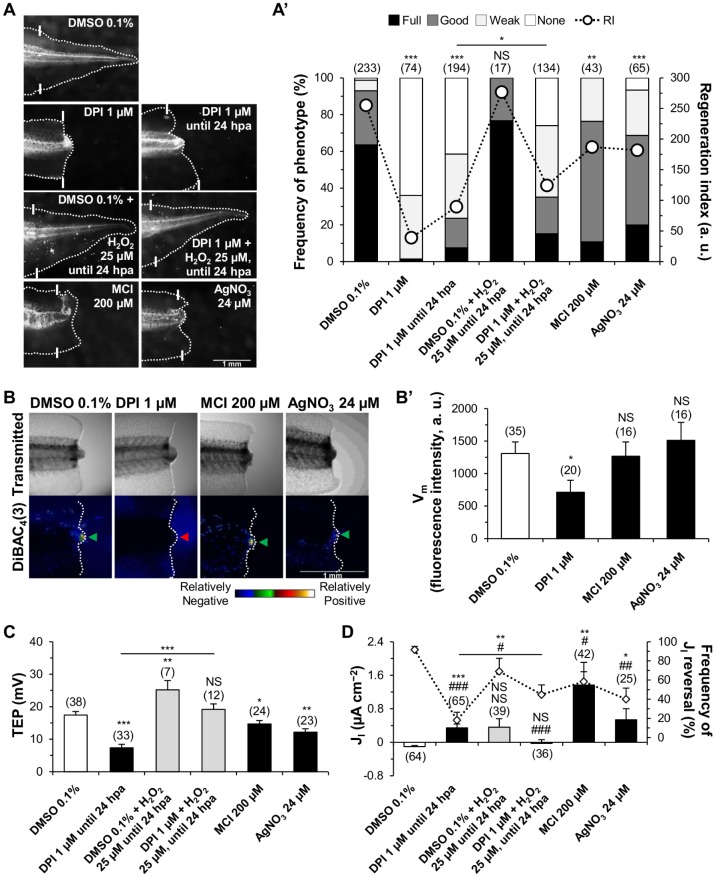Fig. 2.
Electrogenic property of NADPH oxidases is necessary for Vm depolarization and catalytic property for regeneration, TEP increase and JI reversal. (A,A′) Loss and rescue of regeneration by ROS and H2O2 modulation. (A) Representative 7 dpa tails from vehicle-control (DMSO 0.1%) and pharmacologically treated tadpoles. White lines: amputation plane. (A′) Qualitative and quantitative analyses of regeneration efficiency for the different conditions tested. RI, regeneration index. (B,B′) Activity of NADPH oxidases per se depolarizes Vm. (B) Representative tails under transmitted light (top panels) and fluorescence imaging (bottom panels) of membrane potential-sensitive dye DiBAC4(3) in vehicle control and after pharmacological treatment at 6 hpa. Green arrowhead, Vm depolarization (relatively positive) in the bud; red arrowhead, no Vm depolarization in the bud. (B′) Semi-quantitative analysis of Vm for the different conditions tested. (C,D) Pharmacological loss and rescue of regeneration are correlated with variations of TEP (C) and JI (D). In D, frequencies of current reversals (mean percentage of inward JI, diamonds) also correlated with pharmacological treatment. *P<0.05 versus JI magnitude; #P<0.05 versus JI reversals; **,##P<0.01; ***,###P<0.001. a.u., arbitrary units. Scale bars: 1 mm; n values are indicated in brackets.

